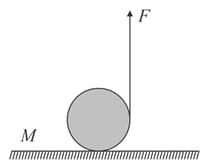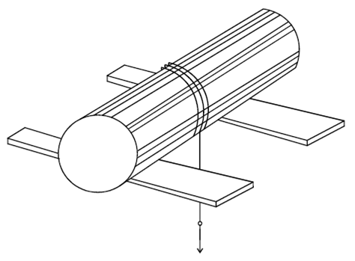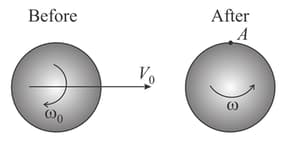If the positions of two like parallel forces on a light rod are interchanged, their resultant shifts by one-fourth of the distance between them, then the ratio of their magnitude is-

Important Questions on Rotational Mechanics
Two steel balls of equal diameter are connected by a rigid bar of negligible weight as shown and are dropped in the horizontal position from height above the heavy steel and brass base plates. If the coefficient of restitution between the ball and steel base is and that between the other ball and the brass base is . The angular velocity of the bar immediately after the rebound is where is: (Assume the two impacts are simultaneous.)

Each of the double pulleys shown has a centroidal mass moment of inertia of inner radius r and an outer radius Assuming that the bearing friction of hinge at A and at B is equivalent to torque of magnitude then the tension (in N) in the string connecting the pulleys is :

The free end of the string wound on the surface of a solid cylinder of mass and radius is pulled up by a force as shown. If there is sufficient friction between cylinder and floor then the upper limit to the angular acceleration of the cylinder for which it rolls without slipping is

A uniform solid cylinder of mass rests on two horizontal planks. A thread is wound on the cylinder. The hanging end of the thread is pulled vertically down with a constant force .

Find the maximum magnitude of the force which still does not bring about any sliding of the cylinder, if the coefficient of friction between the cylinder and the planks is equal to .
The acceleration of the axis of the cylinder rolling on the planks is , where is
A uniform disc of mass radius is moving towards right on smooth horizontal surface with velocity & having angular velocity about the perpendicular axis outward the plane of disc passing through centre of disc. Suddenly top point of the disc gets hinged about a fixed smooth axis. The angular velocity (in ) of disk about new rotation axis is:

A regular hexagonal uniform block of mass rests on a rough horizontal surface with a coefficient of friction as shown in the figure. A constant horizontal force is applied on the block as shown. If the coefficient of friction is sufficient to prevent slipping before toppling, then the minimum force (in ) required to topple the block about its corner is

